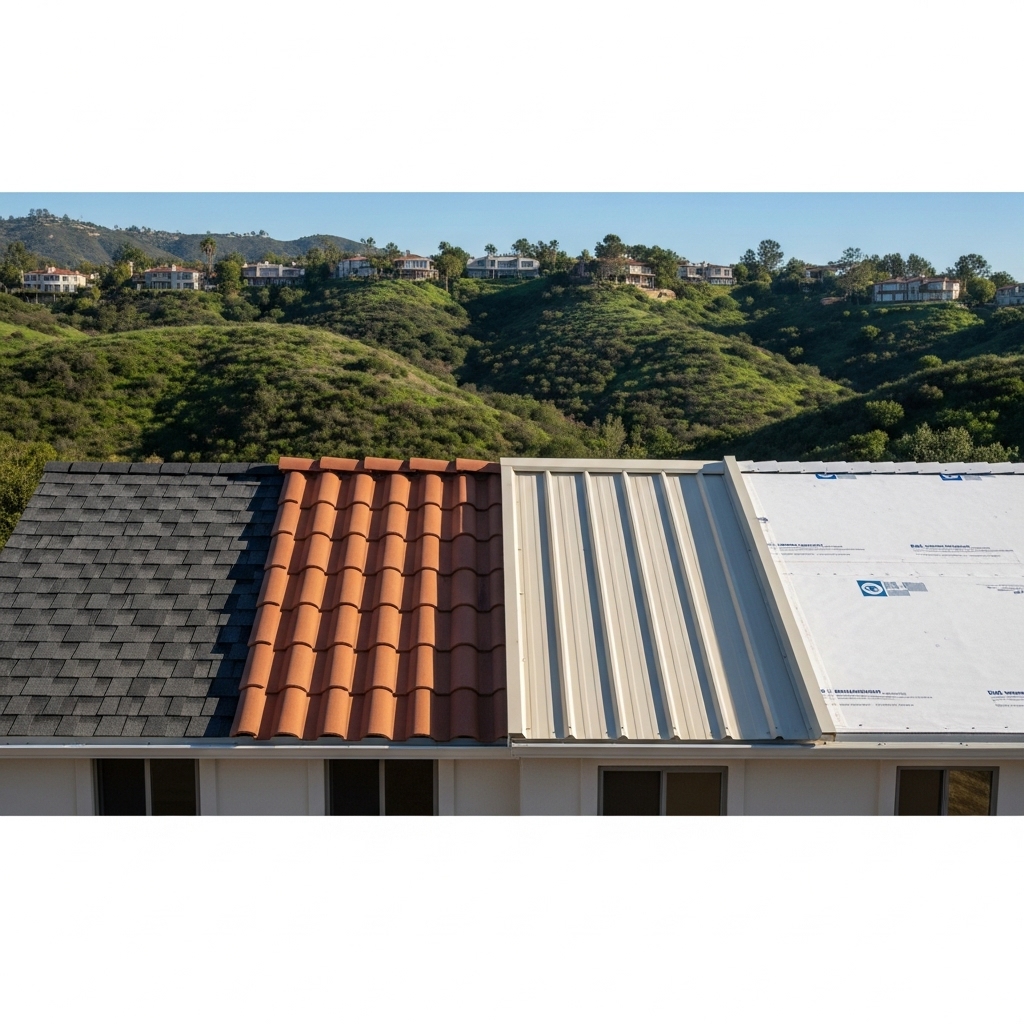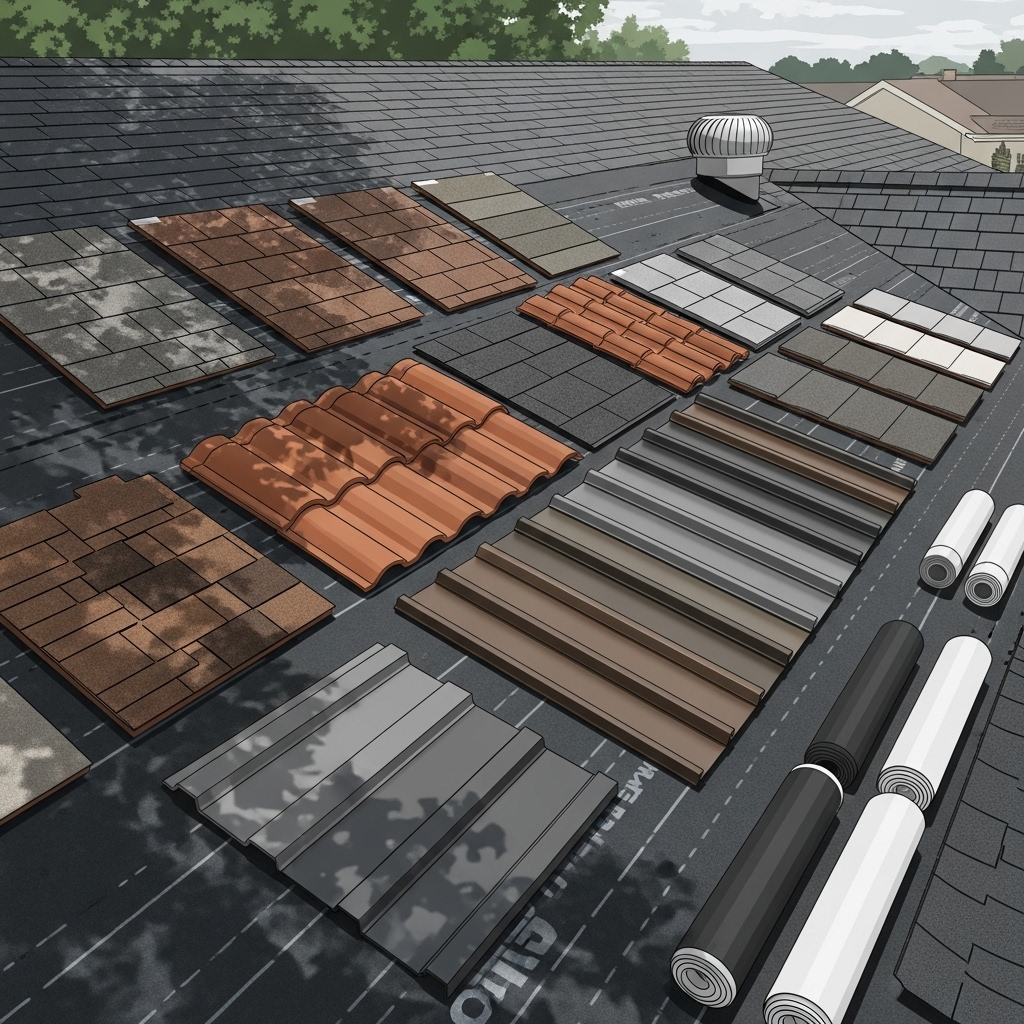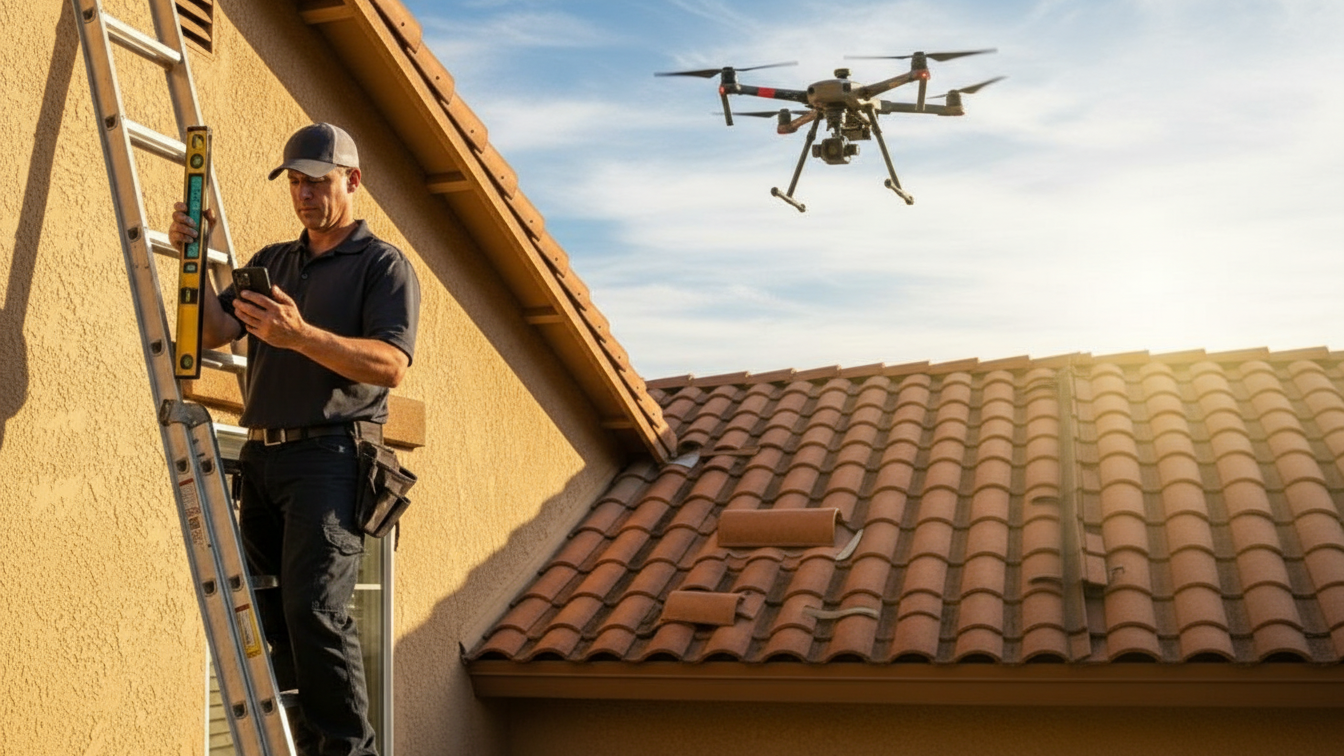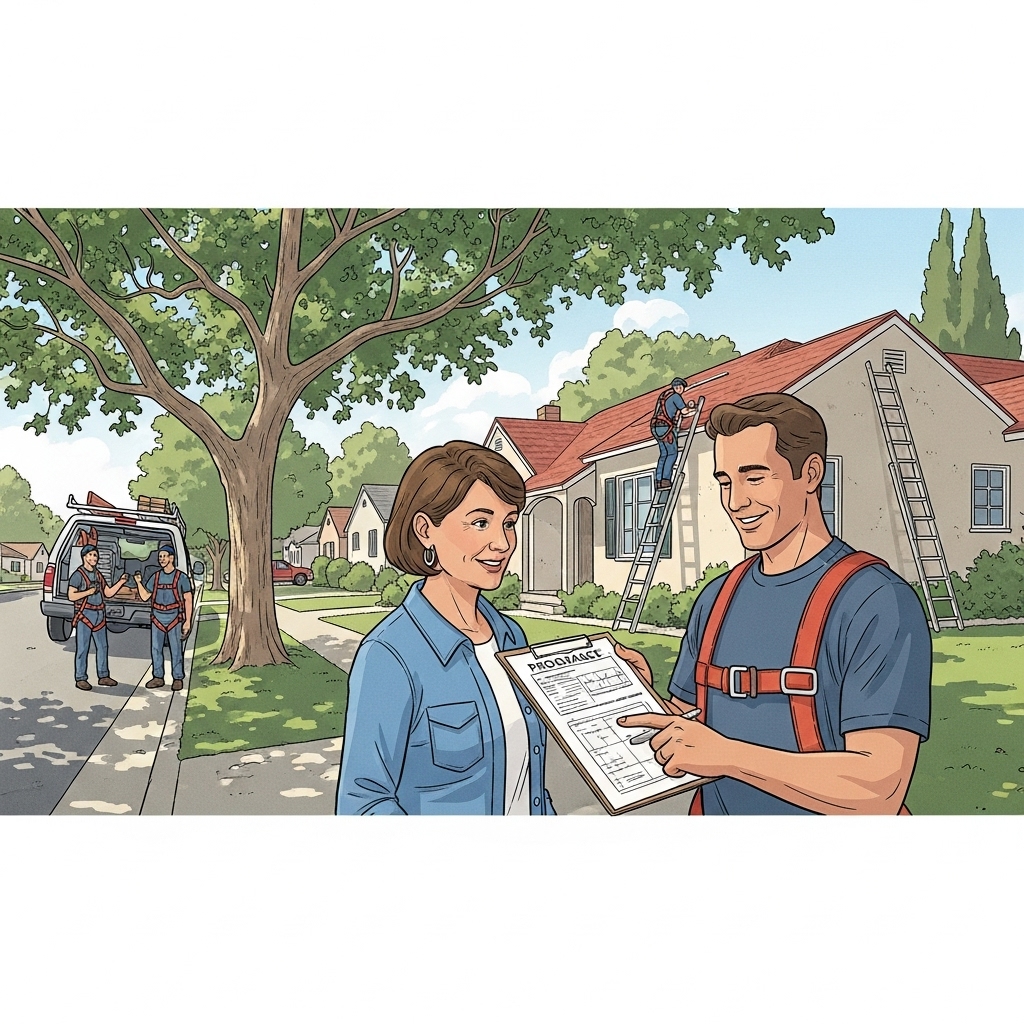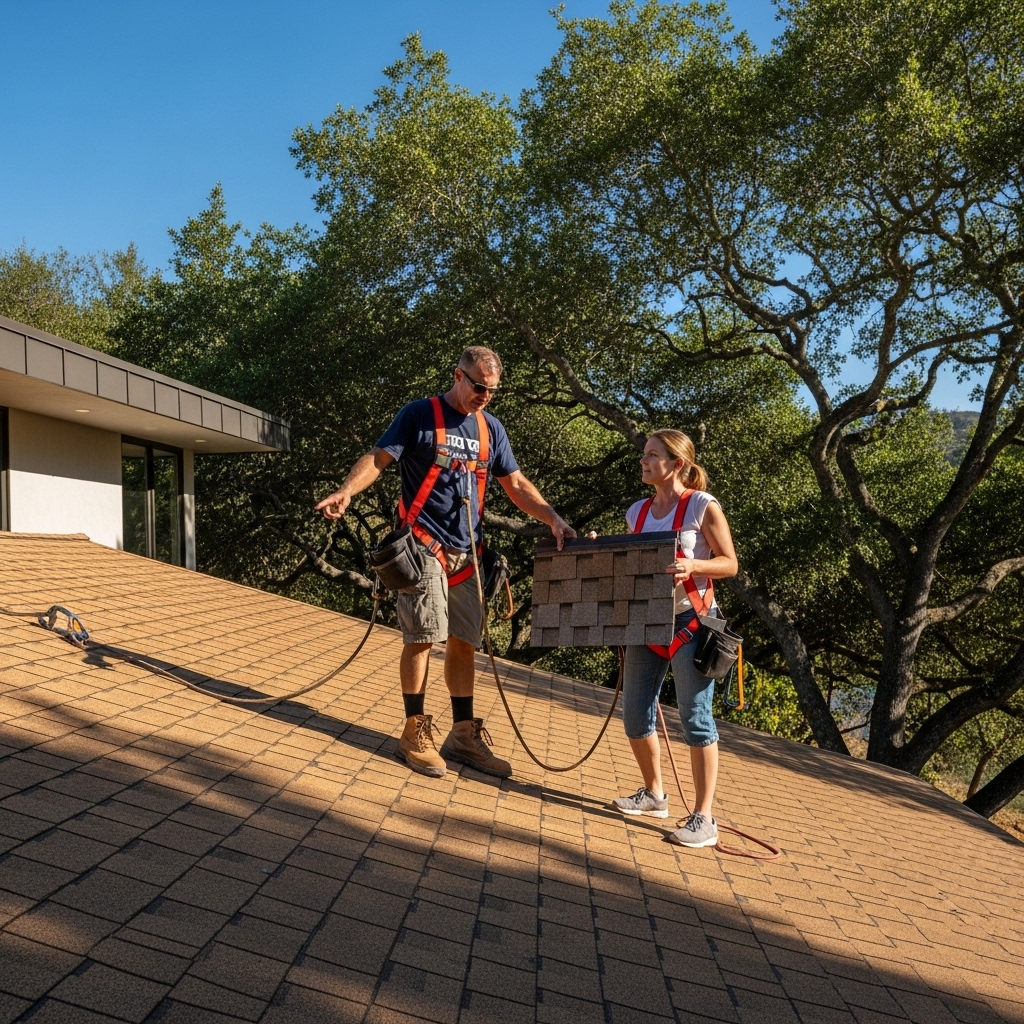Santa Barbara’s roofs live at the meeting point of ocean breezes, mountain winds, and sunlight that can shift from soft to intense in a single afternoon. Choosing the best cool roofing materials for this climate is less about trends and more about fit: matching your home’s form and style with assemblies that reflect heat, manage moisture, and endure marine exposure. If you are just beginning to sort options, a broad look at cool roofing helps frame the conversation and ensures that each material is evaluated for performance, appearance, and maintenance over time.
Reflective shingles that respect tradition
For many Santa Barbara neighborhoods, architectural shingles in light, cool-rated colors offer a familiar look with modern performance. These shingles are engineered to reflect more sunlight than conventional versions, reducing surface temperatures and easing heat transfer to the attic. Contractors select underlayments, ridge vents, and flashing details to complement the reflectivity, building a system that holds up against our coastal air and occasional wind bursts. The color range includes warm, subtle tones that pair naturally with stucco and classic trim, preserving curb appeal while improving comfort.
Tile options that blend heritage and performance
Tile is part of Santa Barbara’s visual language, especially in areas influenced by Spanish Colonial Revival architecture. Today’s high-reflectance tiles deliver the familiar profiles homeowners love—S-shaped, barrel, or flat—while offering coatings that bounce back a significant portion of the sun’s energy. Under the tile, robust underlayment, battens, and flashing form a resilient moisture barrier. Contractors may also integrate vented spaces beneath the tile to speed drying after a foggy morning and to assist in heat dissipation. The result is a roof that looks timeless from the street and performs like a modern, energy-conscious system.
Metal roofing with reflective finishes
Metal thrives along the coast when specified and detailed correctly. Standing-seam panels with reflective finishes shed heat efficiently, and their sleek lines complement both contemporary homes and updated cottages. The key is corrosion resistance: proper alloys, coatings, and fasteners keep edges and seams strong in salty air. With careful attachment and underlayment selection, metal roofs also handle wind events gracefully, including the gusty evenings that sometimes arrive from the mountains. From a maintenance perspective, rinsing to remove salt and dust helps the finish keep its luster and reflectivity.
Single-ply membranes for low-slope roofs
Low-slope sections common on mid-century and modern homes benefit from bright, reflective membranes such as TPO or PVC. These systems are welded into continuous surfaces that resist standing water and UV exposure. In Santa Barbara, contractors pay special attention to edge metal, skylight curbs, and scuppers, ensuring clean water flow after misty mornings and light rains. Membranes can be paired with tapered insulation to correct subtle drainage issues, an investment that keeps surfaces cleaner and extends service life.
Reflective cap sheets and modified systems
For roofs that already have a built-up or modified bitumen base, reflective cap sheets can deliver cool roofing performance without a complete system change. These cap sheets use light-colored mineral surfaces or coatings to increase reflectance. With careful preparation, reinforcement at transitions, and compatible sealants, a reflective cap sheet becomes an efficient upgrade that respects the existing roof’s structure while improving thermal behavior.
Coatings as a strategic refresh
Fluid-applied coatings transform aging roofs into continuous reflective fields that seal hairline cracks, enhance UV resistance, and unify mixed materials around penetrations. Acrylics, silicones, and polyurethanes each offer strengths—cleanability, ponding resistance, and toughness, respectively. Along the coast, selecting chemistry for salt exposure and UV durability is key. Coatings work especially well where drainage is adequate and the substrate is sound, turning a good roof into a great performer with minimal visual impact from the street.
Ventilation, insulation, and the whole-system view
Materials matter, but assemblies win the day. A reflective surface paired with balanced attic ventilation and appropriate insulation delivers the largest comfort gains. In older bungalows near the beach, modest ventilation improvements often complement a new reflective shingle or tile installation. In hillside homes, where late-day sun can be intense on south-facing slopes, a combination of reflective surfaces and controlled airflow tames interior temperatures. Contractors who adopt a whole-system view help you feel the difference inside, not just see it outside.
Microclimates and material selection
Santa Barbara’s microclimates are subtle yet meaningful. Along the waterfront, salt and fog prioritize corrosion-resistant accessories and easy-to-clean finishes. In the Upper East and Mission Canyon, calm afternoons can intensify heat on west-facing slopes, making high SRI values and ventilation even more important. Toward Goleta, slightly warmer inland conditions reward materials with strong UV stability. Choosing among shingles, tile, metal, membranes, and coatings becomes easier when you match these site-specific realities with the strengths of each system.
Fire resistance and hillside considerations
Where homes border wildland areas, roof assemblies with Class A ratings and ember-resistant details are essential. Tile and metal can perform well in these settings when detailed with proper valley protection and screened vents. Reflective shingles designed for fire resistance are also widely available. Contractors familiar with local topography will align your material choice with hillside wind patterns and neighborhood guidelines, ensuring that your cool roof supports both safety and style.
Color harmony and curb appeal
Reflectivity does not require stark white. Many cool-rated products achieve impressive solar reflectance with warm grays, light tans, and soft terracotta tones. Samples viewed in natural light help ensure the hue remains pleasing across sunny afternoons and foggy mornings. By aligning roof tones with stucco, stone, and landscape elements, you preserve the balance that defines Santa Barbara’s streetscapes.
Solar integration from day one
Pairing a cool roof with solar is a natural fit. Reflective surfaces lower roof temperatures, which supports panel efficiency, and modern mounting systems protect waterproofing. Planning for panel layout, wire paths, and attachment points at the roofing stage produces a clean, durable installation that looks intentional rather than after-the-fact. Coordinating trades early prevents redundant penetrations and keeps the roof’s appearance refined.
Maintenance rhythms for a coastal city
Along the South Coast, maintenance rhythms align with the marine layer and seasonal winds. Rinsing reflective surfaces to remove salt and dust preserves brightness and thermal performance. Clearing gutters and scuppers after flowering trees drop their leaves keeps water moving. A short, predictable maintenance routine underscores one of the great virtues of cool roofs: they keep working quietly in the background, supporting indoor comfort without constant attention.
Choosing materials with confidence
The best material for your home is the one that balances performance, aesthetics, and maintenance within your specific setting. A roof visible from a second-story patio might favor a textured shingle in a soft, reflective color; a mid-century home with a flat roof may thrive with a bright membrane and tapered insulation; a classic stucco house near the Mission could combine high-reflectance tile with discreet ventilation improvements. Standing on the property, watching how light moves across the roof, and reviewing samples in natural daylight are the most reliable ways to decide.
As you narrow choices, it helps to revisit the basics of cool roofing so each material is weighed not just for appearance, but for how it integrates into a complete assembly—underlayments, flashings, edge metals, and attic considerations included. This whole-home perspective leads to results that feel as good as they look.
What homeowners often ask about materials
People ask whether reflective shingles or tiles will look out of place. In practice, today’s color ranges blend seamlessly with Santa Barbara’s architecture. Others wonder about the durability of white membranes in salt air; the answer is that with quality edge metals and periodic rinsing, these surfaces hold up well and stay bright.
Homeowners are curious about glare from light roofs. Thoughtful color selection and attention to roof edges minimize brightness where visible, especially near terraces and upper windows. There is also interest in how materials behave during windy evenings—standing-seam metal and properly fastened shingles and tiles handle gusts well when installed to specifications.
Questions about tile weight come up, especially in older homes. Contractors verify structural capacity and can suggest lighter profiles that maintain the look while easing load. For low-slope areas, people ask whether coatings or membranes are better; the choice depends on substrate condition, drainage, and long-term maintenance preferences.
FAQ: Which cool roofing material best handles salty air?
Metal with a marine-grade finish, reflective membranes with corrosion-resistant edge metals, and high-quality tiles with durable coatings all perform well near the coast when detailed correctly and rinsed periodically.
FAQ: Will a reflective roof make my home too bright?
Not when color and texture are chosen thoughtfully. Light, warm hues and textured surfaces soften appearance while maintaining high reflectance. Viewing samples outdoors ensures the look is comfortable in real conditions.
FAQ: Can I mix materials on one home?
Yes. Many Santa Barbara homes combine tile or reflective shingles on pitched sections with membranes or coatings on flat areas. Careful flashing and a coordinated color palette keep the roof unified.
FAQ: How do these materials interact with solar?
Reflective roofs complement solar by reducing surface temperatures and supporting panel efficiency. Planning attachments and wire paths during roofing preserves waterproofing and keeps the installation tidy.
FAQ: What maintenance should I expect?
Plan on light maintenance: rinsing to remove salt and dust, clearing drains and gutters, and periodic inspections, particularly after windy spells. These steps support longevity and sustained reflectivity.
Ready to choose the right material for your home?
If you are weighing options and want a roof that fits Santa Barbara’s climate and character, take a whole-home view: appearance, performance, and maintenance in balance. Walk the property with a local professional, watch the light across the roof, and review samples in natural sun. For a helpful overview before that meeting, explore proven insights into cool roofing, then plan your project with confidence and a clear path to a cooler, more comfortable home.

